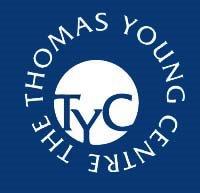

- This event has passed.
TYC Seminar: Interpreting experiments using simulations and using experiments to improve simulations of intrinsically-disordered proteins
3 March @ 3:00 pm – 4:00 pm

See a recording of the seminar here
Kresten Lindorff-Larsen – University of Copenhagen
Interpreting experiments using simulations and using experiments to improve simulations of intrinsically-disordered proteins
Intrinsically disordered proteins (IDPs) and flexible regions in multi-domain proteins display substantial conformational heterogeneity. Characterizing the conformational ensembles of these proteins in solution typically requires combining data from one or more biophysical techniques with computational modelling or simulations [1,2]. Experimental data can either be used to assess the accuracy of a computational model or to refine the computational model to get a better agreement with the experimental data. I will discuss two different approaches to integrate experiments and simulations of IDPs.
In the first approach we use experimental data to refine conformational ensembles of IDPs in a systemspecific manner. I will describe how we use our Bayesian-Maximum Entropy software to refine conformational ensembles of IDPs generated by simulations [2–6]. I will briefly touch upon a key issue regarding the so-called “forward models” that are used to calculate experimental observables from conformational ensemble and highlight how generating such models for IDPs is important but difficult [7–9].
In the second approach we use the experimental data to refine the force field used the simulations. I will describe a Bayesian formalism we have developed and applied to optimize and parameterize force fields by targeting experimental observables [10,11]. We have used this method to parameterize a new coarsegrained model for IDPs by targeting data from small-angle scattering experiments and nuclear magnetic resonance spectroscopy on IDPs in solution [11]. I will describe how this model enables us to study interactions between IDPs and their formation of higher-order structures in biomolecular condensates, and discuss initial work towards improving the Martini coarse-grained model for disordered proteins [4,12].
References:
1. Bottaro, Sandro, and Kresten Lindorff-Larsen. “Biophysical experiments and biomolecular simulations: A perfect match?.” Science 361: 355-360 (2018)
2. Orioli, Simone, et al. “How to learn from inconsistencies: Integrating molecular simulations with experimental data.” Prog Mol Biol and Transl Sci 170: 123-176 (2020)
3. Bottaro, Sandro, Tone Bengtsen, and Kresten Lindorff-Larsen. “Integrating molecular simulation and experimental data: A Bayesian/maximum entropy reweighting approach.” Structural Bioinformatics. Humana 219-240 (2020)
4. Larsen, Andreas Haahr, et al. “Combining molecular dynamics simulations with small-angle X-ray and neutron scattering data to study multi-domain proteins in solution.” PLoS Comput Biol 16: e1007870 (2020)
5. Ahmed, Mustapha Carab et al. “Computing, analyzing, and comparing the radius of gyration and hydrodynamic radius in conformational ensembles of intrinsically disordered proteins.” Intrinsically Disordered Proteins. Humana 429-445 (2020)
6. Crehuet, Ramon, et al. “Bayesian-maximum-entropy reweighting of IDP ensembles based on NMR chemical shifts.” Entropy 21: 898 (2019)
7. Lindorff-Larsen, Kresten, and Birthe B. Kragelund. “On the potential of machine learning to examine the relationship between sequence, structure, dynamics and function of intrinsically disordered proteins.” J Mol Biol 433:167196 (2021).
8. Pesce, Francesco, and Kresten Lindorff-Larsen. “Refining conformational ensembles of flexible proteins against small-angle X-ray scattering data.” Biophys J 120:5124–5135 (2021)
9. Tesei, Giulio, et al. “DEER-PREdict: software for efficient calculation of Spin-Labeling EPR and NMR data from conformational ensembles.” PLoS computational biology 17: e1008551 (2021)
10. Norgaard, Anders B., Jesper Ferkinghoff-Borg, and Kresten Lindorff-Larsen. “Experimental parameterization of an energy function for the simulation of unfolded proteins.” Biophys J 94: 182-192 (2008)
11. Tesei, Giulio, et al. “Accurate model of liquid-liquid phase behaviour of intrinsically-disordered proteins from optimization of single-chain properties.” Proc Natl Acad Sci 118: e2111696118 (2021).
12. Thomasen, F. Emil, et al. “Improving the global dimensions of intrinsically disordered proteins in Martini 3.” bioRxiv (2021).
Biography
Kresten Lindorff-Larsen trained as a biochemist at the University of Copenhagen and Carlsberg Laboratory, and completed his Ph.D. at the University of Cambridge in 2004 under the supervision of Prof. Christopher M. Dobson. He then moved on to become an assistant professor in Copenhagen before joining D. E. Shaw Research in New York in 2007. He returned to Copenhagen in 2011, where he now serves as a Professor of Computational Protein Biophysics at the Linderstrøm-Lang Centre For Protein Science. He received the Danish Independent Research Councils’ Young Researchers’ Award in 2006, was a co-recipient of the 2009 Gordon Bell Prize and has received several prestigious grants including a Hallas-Møller stipend (2011), a Sapere Aude starting grant (2012), and most recently a Novo Nordisk Foundation challenge programme grant (2019). He is the director of the Lundbeck Foundation BRAINSTRUC initiative in structural biology and the Novo Nordisk Foundation PRISM (Protein Interactions and Stability in Medicine and Genomics) centre. Current research interests include developing and applying computational methods for integrative structural biology, and the integration of biophysics and genomics research.
Organised by:
Edina Rosta
e.rosta@ucl.ac.uk
https://ucl.zoom.us/j/93351179800?pwd=bVBhNjJhZURNc05wR1piTUtTWXBVUT09
Meeting ID: 933 5117 9800 Passcode: TYCIGS
